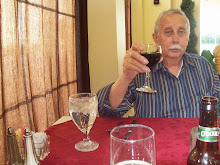My absolute favorite movies were the Alien series of film. Everything about them was great. Sigourney Weaver was astounding as the tough, brave Officer Ripley. In the first movie, The Alien, the starship sets were as so realistic while watching the movies you felt that you were aboard a real starship. Artist H.R.Giger's design of the alien spaceship and the alien creature itself was superb. The suspense and terror rocked me to the very core. The sequel, Aliens, was as great and in some ways as the original Alien. Although not quite up to par with the first two, the third and fourth films, Alien 3 and Alien Resurrection, in the series were also quite good. The only disappointment was the fifth in the series, Alien vs Preditor, which was a complete bomb. This is the only one that Sigourney Weaver was not in.


Alien garnered both critical acclaim and box office success, receiving an Academy Award for Best Visual Effects, Saturn Awards for Best Science Fiction Film, Best Direction for Scott, and Best Supporting Actress for Cartwright, and a Hugo Award for Best Dramatic Presentation, along with numerous other award nominations. It has remained highly praised in subsequent decades, being inducted into the National Film Registry of the Library of Congress in 2002 for historical preservation as a film which is "culturally, historically, or aesthetically significant" and being ranked by the American Film Institute in 2008 as the seventh-best film in the science fiction genre.
Here is a summery of the plot of Alien. It contains spoilers. So, if you haven't seen the film and intend watching it, skip this part of my post. The commercial towing spaceship Nostromo is on a return trip from Thedus to Earth carrying its seven-member crew in hypersleep. Upon receiving a transmission of unknown origin from a nearby planetoid, the ship's computer awakens the crew. Acting on orders from their corporate employers, the crew lands on the planetoid, resulting in some damage to the ship. Captain Dallas, Executive Officer Kane, and Navigator Lambert set out to investigate the signal's source while Warrant Officer Ripley, Science Officer Ash, and Engineers Brett and Parker stay behind to monitor their progress and make repairs. The signal is coming from a derelict alien spacecraft. Inside they find the remains of a large alien creature whose ribs appear to have been exploded outward from the inside. Ripley determines that the signal transmission is some type of warning. Kane discovers a vast chamber containing numerous eggs, one of which releases a creature that attaches itself to his face. Dallas and Lambert carry the unconscious Kane back to the Nostromo, where Ash allows them inside against Ripley's orders to follow the ship's quarantine protocol. They unsuccessfully attempt to remove the creature from Kane's face, discovering that its blood is an extremely corrosive acid. Eventually the creature detaches on its own and is found dead. With the ship repaired, the crew resume their trip back to Earth.
Kane awakens seemingly unharmed, but during a meal before re-entering stasis he begins to choke and convulse until an alien creature bursts from his chest, killing him and escaping into the ship. Lacking conventional weapons, the crew attempt to locate and capture the creature by fashioning motion trackers, electric prods, and flamethrowers. Brett follows the crew's cat into a large room where the now-fully-grown Alien attacks him and disappears with his body into the ship's air shafts. Dallas enters the shafts intending to force the Alien into an airlock where it can be expelled into space, but it ambushes him. Lambert implores the remaining crew members to escape in the ship's shuttle, but Ripley, now in command, explains that the shuttle will not support four people.
Accessing the ship's computer, Ripley discovers that Ash has been ordered to return the Alien to the Nostromo's corporate employers even at the expense of the crew. Ash attacks her, but Parker intervenes and decapitates him with a blow from a fire extinguisher, revealing Ash to be an android. Before Parker incinerates him, Ash predicts that the other crew members will not survive. The remaining three crew members plan to arm the Nostromo's self-destruct mechanism and escape in the shuttle, but Parker and Lambert are killed by the Alien while gathering the necessary supplies. Ripley initiates the self-destruct sequence and heads for the shuttle with the cat, but finds the Alien blocking her way. She unsuccessfully attempts to abort the self-destruct, then returns to find the Alien gone and narrowly escapes in the shuttle as the Nostromo explodes.
As she prepares to enter stasis, Ripley discovers that the Alien is aboard the shuttle. She puts on a space suit and opens the hatch, causing explosive decompression which forces the Alien to the open doorway. She shoots it with a grappling gun which propels it out, but the gun is caught in the closing door, tethering the Alien to the shuttle. It attempts to crawl into one of the engines, but Ripley activates them and blasts the Alien into space. Ripley puts herself and the cat into stasis for the return trip to Earth.
If you haven't seen these movies, you've missed a great treat. Be sure to watch them on the largest screen you can find. I can't imagine what they would be like on IMAX in 3D.


